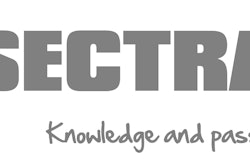
Managing radiation dose is a hot topic in healthcare among both clinicians and patients. So how can your facility address concerns about excess dose while also improving patient care? The solution is simple -- but not necessarily easy, according to a presentation this week at AHRA 2015 in Las Vegas.
"Radiation management is becoming more complex," presenter Robert Pizzutiello of Landauer Medical Physics told AHRA attendees. "Advanced imaging and treatment choices, healthcare consolidation, and tougher regulations and standards are raising the bar for radiation safety. But it is possible to manage dose successfully, especially through a team approach."
Rising radiation
The number of high-radiation-dose procedures such as CT has increased dramatically. For example, 22.6 million CT scans were performed in the U.S. in 1996, but that number had risen to 62 million in 2006. Public perception has also changed, due in part to media coverage such as Walt Bogdanich's "Radiation Boom" series published in 2011 by the New York Times.
 Robert Pizzutiello of Landauer Medical Physics.
Robert Pizzutiello of Landauer Medical Physics.States have also doubled down on their scrutiny of radiation dose, according to Pizzutiello. Four already have CT dose reporting requirements, six are currently developing them, and four more are exploring the development of rules regarding radiation dose.
"In a 2013 survey conducted by the American Association of Physicists in Medicine, 23 responding states reported that CT regulations are being discussed," Pizzutiello said. "And states draw on each other's experiences. For example, there are now 'no texting while driving' laws in all but nine states."
In addition, the Joint Commission released new requirements for diagnostic imaging in January:
- CT radiation dose indices must be documented in a retrievable format.
- CT protocols for exam indication, contrast, patient age and size, and expected dose index range must be established.
- These protocols must be reviewed by radiologists, medical physicists, and technologists.
- Incidents where CT radiation dose was higher than dose ranges must be reviewed.
Simple but challenging?
Managing radiation dose isn't always easy, Pizzutiello said.
"There can be significant complications if you try to create a cumulative radiation dose [measurement] for patients," he told session attendees. "Lack of a consistent unit of radiation dose measure is one of them, plus the fact that the [International Commission on Radiological Protection] says that effective dose is not to be used for individual patients."
So what makes more sense? Keeping a record of the exams a patient has undergone, rather than the doses, Pizzutiello said.
"Tell patients that you have a team that monitors all doses and optimizes them to get the images your doctors need to care for you," he said.
Pizzutiello also suggested that facilities can benefit from using radiation dose index monitoring software, which can track a patient's ongoing radiation exposure across multiple modalities and procedures. In addition, it's crucial to continually analyze your department's images and dose reports to optimize image quality and minimize patient risk.
"Perform trend analyses that compare dose indices as a function of modality, protocol, exam sites, patient population, and time needed for the exam," he said.
There are commercial software applications that can be integrated into a facility's RIS and PACS and used to track dose information, according to Pizzutiello. These include PACSHealth's DoseMonitor, Sectra's DoseTrack, Bayer HealthCare's Radimetrics enterprise platform, and GE Healthcare's DoseWatch, to name a few. These packages can also send data to the American College of Radiology's Dose Index Registry (DIR), he said.
Collaboration by committee
One effective way to manage radiation dose is to establish a dose optimization committee that is responsible for protocol design and for reviewing all dose parameter settings, Pizzutiello said. Committee members can include radiologists, medical physicists, lead technologists, and safety technologists. But it isn't necessarily the same as a radiation safety committee, which all hospitals already have.
"A dose reduction committee may meet more often than quarterly, and its primary focus is on patients and clinical dose, rather than regulatory compliance and occupational radiation safety," he said. "This group monitors the impact of changes to imaging protocols. And its efforts aren't limited to CT; it can work with all departments where radiation is involved."
Pizzutiello described the accomplishments of this type of committee at the Women and Children's Hospital of Buffalo. From 2011 to 2013, the group helped to significantly reduce the CT dose index for several pediatric CT exams. The committee found that many of the protocols it adopted were already delivering less dose than was commonly used at other children's hospitals across the country.
In any case, the benefits of patient dose optimization are many, Pizzutiello concluded, from compliance with the new Joint Commission standards and/or pertinent state laws to optimizing a facility's investment in low-dose CT scanners and avoiding meaningful use penalties.
Last but not least, optimizing patient dose could be good for your bottom line.
"Dose optimization is a way to differentiate your imaging practice or hospital," he said. "Patients -- and some insurance carriers -- are shopping for low-dose providers."





















